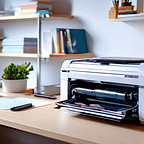Windows 10 Touch Screen not Working Issue [Solved] — (+1 8583265662 )
Encountering issues with your Windows 10 touch screen can be disappointing, particularly when it hampers efficiency. In any case, dread not, as we’ve gathered a far reaching manual for help you investigate and determine contact screen issues really. From driver issues to calibration tips and beyond, we’ll cover everything you need to know to get your touch screen up and running smoothly again.
Understanding Windows 10 Touch Screen Not Working
Windows 10 is renowned for its compatibility with touchscreens, offering a seamless user experience with specialized touch-designed apps. However, touch screen malfunctions can occur unexpectedly, often stemming from driver incompatibility issues. These problems may arise following a Windows 10 update or due to various other factors. In this aide, we’ll dive into the causes, reasons, and answers for settling contact screen issues on Windows 10 gadgets.
How to Fix Windows 10 Touch Screen Not Working
Run the Hardware and Devices Troubleshooter: Use Windows 10’s inherent investigating instruments to identify and determine equipment related issues. Launch the Hardware and Devices troubleshooter through Command Prompt and follow the wizard to automatically detect and repair touch screen problems.
Calibrate the Touchscreen: When facing responsiveness or accuracy issues, recalibrating the touch screen can often rectify the problem. Navigate to tablet PC settings, initiate the calibration process, and follow the on-screen instructions to ensure optimal touch input accuracy.
Disable and Re-enable the Touchscreen: Toggle the touch screen functionality by accessing Device Manager, disabling the HID-compliant touch screen, and then re-enabling it to troubleshoot potential glitches.
Change Power Management Settings: Prevent Windows 10 from automatically turning off the touch screen to conserve power by adjusting power management settings in Device Manager. Ensure the “Allow the computer to turn off this device to save power” option is unchecked.
Update the Touchscreen Drivers: Stay up with the latest by visiting the producer’s site and downloading the most recent driver form. Use Device Manager to update drivers automatically or manually install downloaded drivers for optimal performance.
Rollback the Touchscreen Drivers: If touch screen issues arise following a driver update, consider rolling back to a previous driver version via Device Manager to restore functionality.
Uninstall Recent Programs: Identify and uninstall recently installed programs that may be causing touch screen malfunctions. Navigate to Settings > Apps, sort programs by installation date, and uninstall suspicious applications to troubleshoot the issue.
Move to Another Room: Electromagnetic interference from nearby electronic devices can disrupt touch screen functionality. Experiment by relocating your device to another room and systematically identifying potential sources of interference to resolve the issue.
Clean the Touchscreen: Regularly clean the touch screen surface to remove dust, fingerprints, and dirt that may hinder touch input detection. Use a microfiber cloth and gentle cleaning solution to ensure a pristine touch screen surface.
Contact the Manufacturer: If all troubleshooting steps fail to resolve touch screen issues, contact the system manufacturer for further assistance. Hardware faults may require professional intervention, and manufacturers can provide support or warranty coverage for repair services.
Safety Tips for Windows 10 Touch Screen Not Working
- Exercise caution when adjusting power management settings and updating drivers to avoid unintended consequences.
- Handle electronic devices and cleaning solutions with care to prevent damage to touch screen surfaces.
- Backup important data before performing troubleshooting steps to mitigate potential data loss risks.
Resolving touch screen issues on Windows 10 devices requires a systematic approach encompassing hardware troubleshooting, driver updates, and environmental considerations. By following the comprehensive solutions outlined in this guide, users can effectively diagnose and rectify touch screen problems, restoring seamless touch input functionality for enhanced productivity and user experience. If issues persist, don’t hesitate to seek assistance from the manufacturer to ensure prompt resolution.
For further assistance or inquiries, feel free to contact our technical support team at +1 8583265662.
